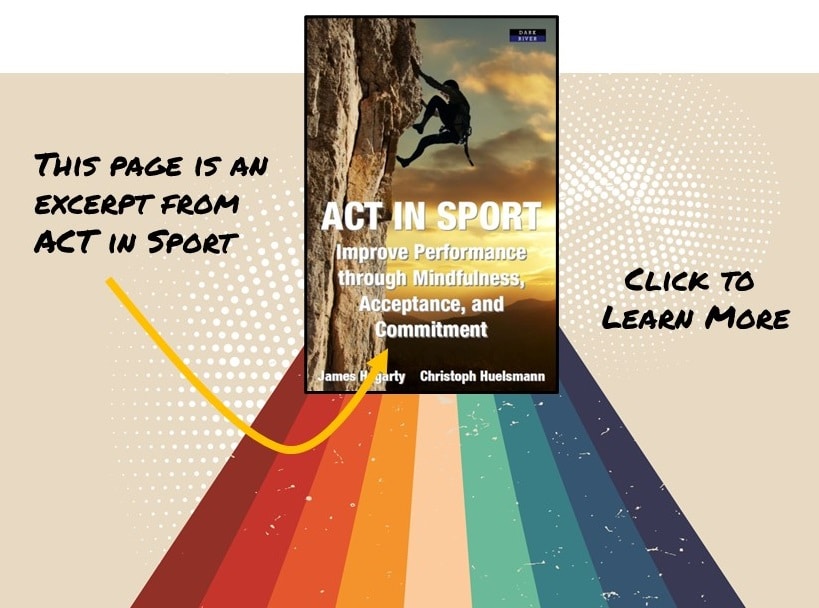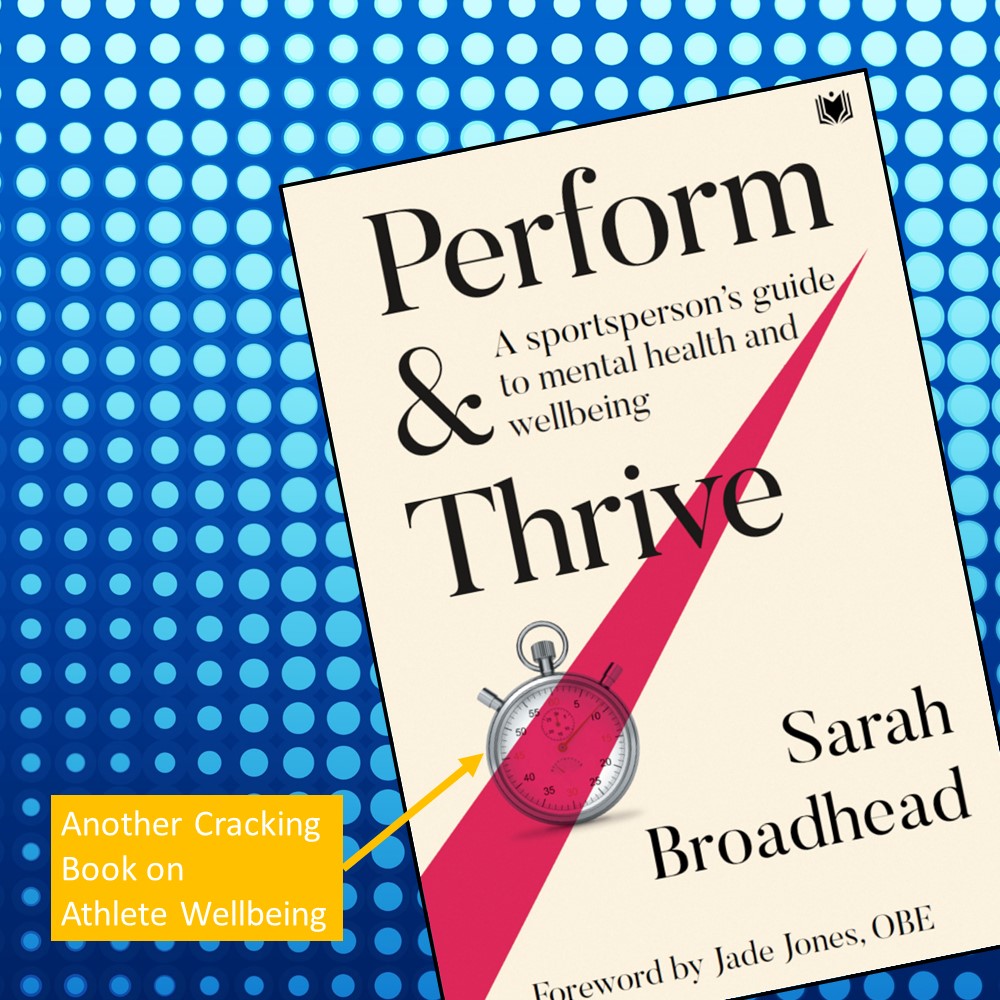

The things we talk about in this book are all aimed at helping us to perform better. Mindfulness is one of the tools we can use to do this. We have alluded elsewhere that there are different forms of mindfulness, and different therapies and schools of thought that tend to use mindfulness in slightly different ways. For our purposes, we use mindfulness based on both our understanding of ACT, and our understanding of meditation techniques.
For us, and as it’s presented in this book for your use, mindfulness is an experiential process. It is mainly a body-based exercise. It is an activity. It is something you do. It is not an intellectual exercise. It is not about thinking. It is not about not thinking. It is about being.
It is fully experiencing your life without any conceptual overlay. That is, without thought getting in the way; without adding interpretation to your experience. That is what the ideal is, anyway.
As an example of adding interpretation to your experience, imagine walking out on a cold damp morning and thinking about how cold it is, how you hate this weather, and how you wished it wasn’t so far to your car. The alternative is simply being aware of the cold: the tingle on your skin, the breeze, the way your breath moves like clouds in the air. Simply experiencing ‘what is’ without adding to it. We will give you some exercises you can use to help develop mindfulness, and the ability to act more flexibly to changing circumstances.
One exercise that can demonstrate the way the mind wanders, jumps around, and doesn’t do what it is told, is what we call the finger exercise.

The Finger Exercise
Get comfortable. Wiggle around if you need to loosen up, then sit up straight in a chair, let your shoulders drop and relax a little. We are going to ask you to close your eyes and allow yourself to breathe calmly and gently. Then put the forefinger of your right hand on your right thigh, about halfway between your knee and hip. Simply hold it there, and pay attention to your breath as you breathe in and breathe out. There is no need to control your breathing, just be aware of it.
That’s all you have to do, except if you notice yourself thinking about something other than your breathing. If you notice your thinking going to something in the past, pull your finger back towards your hip. If you find it on something to do with the future, move it towards the knee. When you are just attending to your breathing, move it back to the middle. Do this for three to five minutes. Make sure you time it. Sit, breathe, and be aware of your breathing. Move your finger depending on where the thoughts that pop into your head go.
Review
What did you notice while you were doing the finger exercise? Did you just sit and pay attention to your breathing with a blank mind? Did thoughts pop up on their own? Did they move back and forth between the past and the future? Were they all about the present?
Most people find that their minds throw up quite a few thoughts, images, worries, and plans. All sorts of things can come up in relatively quick succession, and this happens whenever we just sit and attend to something simple. These small but fairly constant lapses in attention, and moments of distraction, are perfectly normal. However, when we are trying to perform at a high level, and need to react immediately and efficiently, distractibility – even for a split second – can be counter-productive. What are normal lapses in attention or intention for most of us, and slight delays in responding, can lead to mistakes and errors not only in high-performance situations, but in any athletic activity.

Among the skills that we will train in developing psychological flexibility with ACT is how to increase openness and awareness to what’s actually happening in the world outside our skin, rather than overly focusing on what is happening internally. We develop the ability for our attention to become more stable, and less susceptible, to all the various distractions that our habitual ways of thinking and feeling throw at us. When we are less reactive to unbidden or automatic internal events, we can respond more effectively in the present, physical reality – like when a ball is coming towards us, or when another athlete is making a break.
The above exercise helps show how our minds work. We can see that we are not always in control of our inner processes. In fact, our minds (our patterns of thinking) seem to have minds of their own. Once we have noticed some of these tendencies, the next step is to start to do something about it. You have been given some tools to begin improving your ability to notice patterns of reacting in the record sheets you were asked to fill out. Now we are going to look at a practice that helps make us more aware, more focused, and better able to deal with distractions.
Mindfulness of Breath
The granddaddy of all mindfulness exercises, the one that all others are derived from, is mindfulness of breath. This is a practice that really develops the mindfulness/awareness muscles. It is so effective because it requires direct contact with actual physical experience. It also requires ‘open consent,’ an allowing of this experience. As a result, it helps build attention to what is going on, in addition to developing openness and awareness skills. It also requires engagement. For our purposes, there is no better exercise than mindfulness of breath in building openness, awareness, and engagement.
The ‘idea’ of mindfulness of breath can seem quite simple. In reality, it can be a difficult exercise. It is by no means a beginner’s exercise in the sense you need to move on from it to something more complicated. People who have practiced meditation for decades still practise mindfulness of breath, and mindfulness of the body.
It trains openness, awareness, and engagement by getting in touch with what is happening in physical reality, rather than what is going on in our thoughts and imagination, when (at least at times) we would rather be doing something else.
With mindfulness practice, you are effectively turning down the volume of the verbal part of the brain, and turning up the part that deals with somatic, or physical sensations. Studies of those with a history of practicing mindfulness show an association with a larger somatosensory cortex. That is the part of the brain that has the main responsibility for awareness of physical sensations in the body. There have also been studies that have shown changes (enlargements) in some parts of the frontal cortex associated with the ability to attend. In other words, if you practice mindfulness regularly, it changes your brain. This shouldn’t be surprising. It is a skill, and a developmental exercise. In a way, it is like push-ups for the mind. The more you do, the better you get.
How to do it
The simple answer, and the most practical is, find a relatively quiet place where you are unlikely to be disturbed. Get into a stable and comfortable upright position. Then pay attention to the physical sensations of breathing. That’s it!


